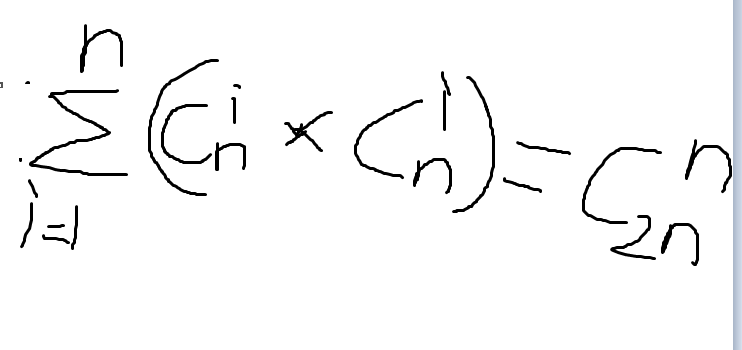套题 ,8.23下午
1 X 国的军队(army.c/cpp/pas)
1.1 题目描述
X 国和 Y 国开战了!
作为 X 国的军事参谋,你了解到事态的严峻性。为了更好地应付敌人,你收集到了 Y
国城市中 n 个据点的信息,你打算攻破这 n 个据点!
每个据点 i 的信息由火力系数 A[i]、士兵数目 B[i]组成,作为一名具有高超预谋能力的
参谋,你当然可以借此分析情势。实际上,你分析得出,攻占一个据点 i,为了稳定己方士
兵士气,至少需要 B[i]个士兵参战,战后将会有 A[i]个士兵阵亡。
由于不停地调谴, 可用的士兵已经不多了, 于是在一个据点参战且未阵亡的士兵可能会
参加别的据点的战斗。你需要计算出攻破这 n 个据点所需要的最少的士兵数目。
然而更糟的, 一共有 T 个城市, 所以你需要将 T 个城市所需的最少士兵数目依次输出。
1.2 输入格式
第一行为一个整数 T,表示城市数目。
接下来 T 组数据。每组数据第一行包含一个数 n,表示据点数目;接下来 n 行,其中
第 i 行包含两个数,分别表示这个据点的火力系数 A[i]以及士兵数目 B[i]。
1.3 输出格式
对于每个城市输出一行,表示攻占这个城市所有据点所需要的最少士兵数目。
1.4 样例输入
2
2
4 7
1 5
3
3
1 4
4 6
3 5
1.5 样例输出
8
10
1.6 数据范围与约定
对于前 20%的数据 n<=9
对于前 40%的数据 n<=1000
对于 100%的数据 n<=100000,T<=10,1<=A[i]<=B[i]<=1000000000。
由于本题读入数据较多,建议使用较快的读入方式。
第一遍错了

#include<iostream> #include<queue> #include<cstdio> #include<algorithm> using namespace std; int f[100007]; long long tot; int a,b; int T,n,minn,maxn; int main() { freopen("army.in","r",stdin); // freopen("army.out","w",stdout); scanf("%d",&T); while(T--) { scanf("%d",&n);tot=0;minn=99999999;maxn=0; for(int i=1;i<=n;i++) { scanf("%d%d",&a,&b); tot+=a; minn=min((b-a),minn);maxn=max(maxn,b); } printf("%lld\n",max((long long )maxn,tot+minn)); } return 0; }

#include<iostream> #include<queue> #include<cstdio> #include<algorithm> #include<cstring> #define LL long long using namespace std; #define M 1000000007 int T,n; LL mub[2000010]; void first(LL x) { mub[1]=1; for(int i=2;i<=x;i++) mub[i]=(mub[i-1]*i)%M; } LL exgcd(LL a,LL b,LL &x,LL &y) { if(!b) { x=1,y=0; return a; } LL dd=exgcd(b,a%b,y,x); y-=a/b*x; return dd; } LL ny(LL a, LL n) { LL x,y; LL d=exgcd(a,n,x,y); if(d==1) return (x%n+n)%n; else return -1; } LL work(LL x) { LL cc=ny(mub[x],M); return mub[x*2]*cc%M*cc%M; } int main() { freopen("pc.in","r",stdin); freopen("pc.out","w",stdout); scanf("%d",&T); first(2000010); while(T--) { scanf("%d",&n); printf("%lld\n",work(n)); } return 0; }
2 排列组合(pc.c/cpp/pas)
2.1 题目描述
T 组数据,每次给定 n,请求出下式的值,对 10^9+7 取模:

2.2 输入格式
第一行一个整数 T,表示数据组数。
接下来 T 行,每一行包含一个整数 n,含义如题所示。
2.3 输出格式
输出 T 行,每行包含一个整数,表示对 10^9+7 取模后的答案。
2.4 样例输入
2
1
2
2.5 样例输出
2
6
2.6 数据范围与约定
对于 30%的数据,T<=500 , n<=10000。
对于 100%的数据,T<=100000 , n<=1000000。
数学奥赛生说:


#include<iostream> #include<queue> #include<cstdio> #include<algorithm> #include<cstring> #define LL long long using namespace std; #define M 1000000007 int T,n; LL mub[2000010]; void first(LL x) { mub[1]=1; for(int i=2;i<=x;i++) mub[i]=(mub[i-1]*i)%M; } LL exgcd(LL a,LL b,LL &x,LL &y) { if(!b) { x=1,y=0; return a; } LL dd=exgcd(b,a%b,y,x); y-=a/b*x; return dd; } LL ny(LL a, LL n) { LL x,y; LL d=exgcd(a,n,x,y); if(d==1) return (x%n+n)%n; else return -1; } LL work(LL x) { LL cc=ny(mub[x],M); return mub[x*2]*cc%M*cc%M; } int main() { freopen("pc.in","r",stdin); freopen("pc.out","w",stdout); scanf("%d",&T); first(2000010); while(T--) { scanf("%d",&n); printf("%lld\n",work(n)); } return 0; }
3 回文(pal.c/cpp/pas)
3.1 题目描述
闲着无聊的 YGH 秒掉上面两道题之后,开始思考有趣的回文串问题了。
他面前就有一个漂浮着的字符串。显然 YGH 是会 manacher 的,于是他随手求出了这
个字符串的回文子串个数。但是他不满足于这个问题,他打算搞出一个数据结构,能够快速
求出这个字符串下标为[l,r]的子串的回文子串个数(相同的回文子串需重复计数)。但是这实
在是太简单啦,他打算考考辣鸡 YYR,可是辣鸡至极的 YYR 完全没有思路。
于是,YGH 扬长而去,在衣袖带起的一小片尘土之中,沉思的 YYR 依旧在那里。
3.2 输入格式
第一行为一个字符串 S。
第二行一个整数 T,表示询问次数。
接下来 T 行,每行两个整数 l、r,表示查询字符串 S 下标为[l,r]的子串的答案。
3.3 输出格式
输出 T 行,每行一个整数表示这个询问的答案。
3.4 样例输入
ababaab
2
1 3
3 7
3.5 样例输出
4
8
NOIP 模拟题 #2
6
3 .6 数据范围与约定
对于 20%的数据,保证 |S| , T<=500
对于 40%的数据,保证 |S| , T <=5000
对于 100%的数据,保证 |S| <=5000 , T<=100000
思路:
首先应该是个dp,dp[i][j]表示区间【i,j】的回文子串数。
我们再加一个数组ok[i][j] 表示 区间【i,j】是否是个回文串。
转移方程是:f[i][j]=f[i][j-1]+f[i+1][j]-f[i+1][j-1]+ok[i][j].

#include<iostream> #include<queue> #include<cstdio> #include<algorithm> #include<cstring> #define LL long long using namespace std; bool ok[5005][5005]; int dp[5005][5005]; char s[5005]; int T,l,r,len; bool check(int l,int r) { if(ok[l][r]) return 1; else if(s[l]==s[r]&&check(l+1,r-1)) return 1; else return 0; } void first() { for(int i=1;i<=len;i++) { dp[i][i]=1;dp[i-1][i]=2; ok[i][i]=1; if(s[i]==s[i-1]) { ok[i-1][i]=1; dp[i-1][i]=dp[i-1][i-1]+dp[i][i]+ok[i-1][i]; } } for(int k=3;k<=len;k++) for(int j=k,i=1;j<=len;i++,j++) { dp[i][j]=dp[i][j-1]+dp[i+1][j]-dp[i+1][j-1]; if(check(i,j)) dp[i][j]++; } } int main() { // freopen("pal.in","r",stdin); // freopen("pal.out","w",stdout); cin>>(s+1);len=strlen(s+1); first(); scanf("%d",&T); while(T--) { scanf("%d%d",&l,&r); printf("%d\n",dp[l][r]); } return 0; }





【推荐】国内首个AI IDE,深度理解中文开发场景,立即下载体验Trae
【推荐】编程新体验,更懂你的AI,立即体验豆包MarsCode编程助手
【推荐】抖音旗下AI助手豆包,你的智能百科全书,全免费不限次数
【推荐】轻量又高性能的 SSH 工具 IShell:AI 加持,快人一步
· .NET Core 中如何实现缓存的预热?
· 从 HTTP 原因短语缺失研究 HTTP/2 和 HTTP/3 的设计差异
· AI与.NET技术实操系列:向量存储与相似性搜索在 .NET 中的实现
· 基于Microsoft.Extensions.AI核心库实现RAG应用
· Linux系列:如何用heaptrack跟踪.NET程序的非托管内存泄露
· TypeScript + Deepseek 打造卜卦网站:技术与玄学的结合
· 阿里巴巴 QwQ-32B真的超越了 DeepSeek R-1吗?
· 如何调用 DeepSeek 的自然语言处理 API 接口并集成到在线客服系统
· 【译】Visual Studio 中新的强大生产力特性
· 2025年我用 Compose 写了一个 Todo App